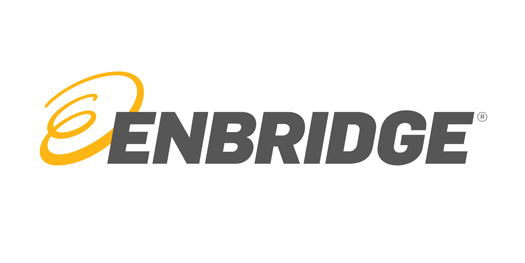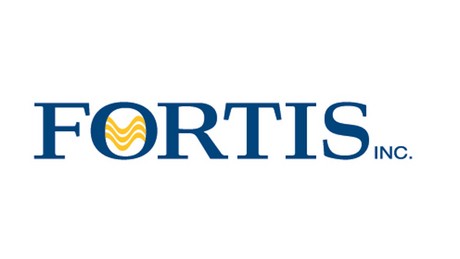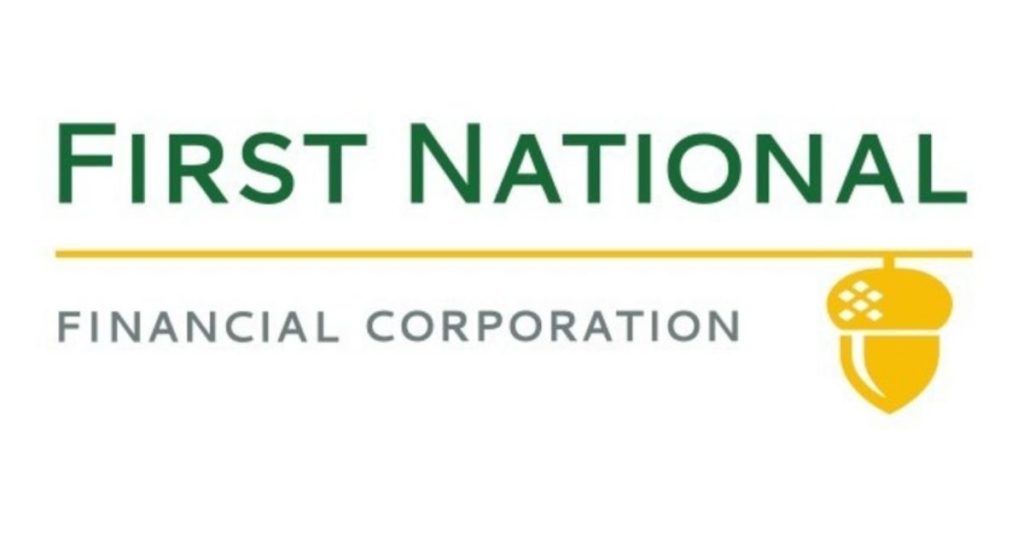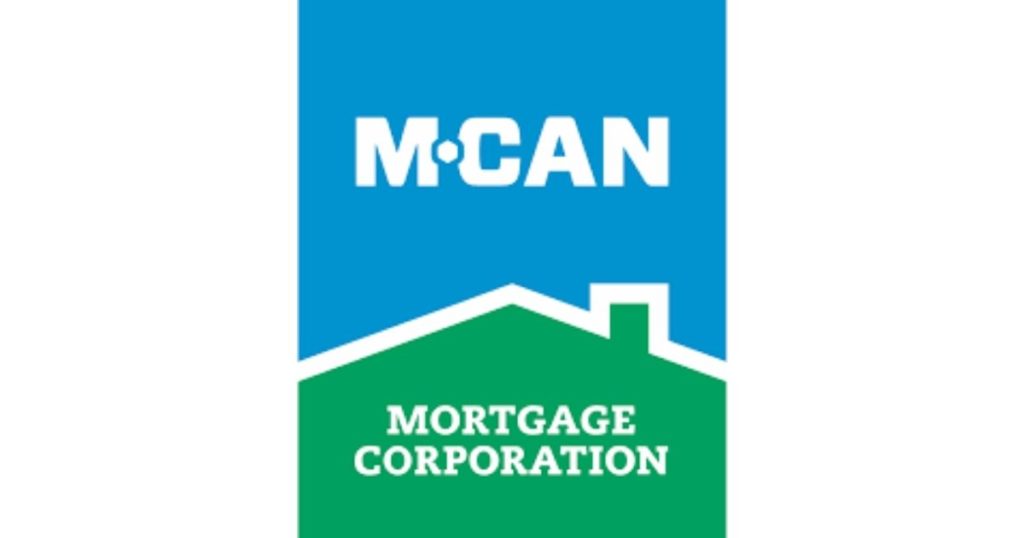Looking for the best Canadian dividend stocks to buy and hold for your portfolio in 2024?
Dividend stocks are some of the best investment options in Canada. It’s a popular way to earn passive income, and many people build their entire portfolios around dividend stocks.
Dividend stocks generally outperform the overall market during a recession, so it’s a popular choice during uncertain times.
Below are my picks for the best Canadian dividend stocks for 2024 investors.
Choosing the Right Dividend Stock
What should you look for in a dividend stock in Canada? The yield is one obvious answer, but there are other factors as well.
It’s important that you understand your investment goals and risk tolerance levels before you start working on building your dividend portfolio.
You should look for a broad array of metrics for the dividend stock you are thinking about buying, but here are a few main things to evaluate:
- Sustainability of the dividends: A high yield does not always mean it will be paid out forever. An important metric to look at is the dividend payout ratio, plus the consistency of the company’s revenues.
- Overall return potential of the stock: Do you believe in the company’s long-term strategy and outlook? Is it in a growing or contracting industry?
- How risky is the stock: If it’s a utility stock, it will likely be less risky than something like a REIT.
I go into how to select the right dividend stock in more detail after the list.
Best Canadian dividend stocks:
- Enbridge (ENB.TO)
- Toronto Dominion (TD.TO)
- Sun Life Financial (SLF.TO)
- Telus (T.TO)
- Fortis (FTS.TO)
- Emera (EMA.TO)
- Algonquin Power and Utilities (AQN.TO)
- Allied Properties REIT (AP-UN.TO)
- First National Financial (FN.TO)
- Goeasy (GSY.TO)
- MCAN Mortgage (MKP.TO)
Here are my picks for the best dividend stocks in Canada:
1. Enbridge

- Ticker: ENB.TO
- Forward Dividend Yield: 7.69%
- Dividend Payout Ratio: 234.83%
- Dividend Yield (12-Month Trailing): 7.56%
- Upcoming Dividend Date: Mar 01, 2024
- Market Cap: $98.56 Billion
Seeing Enbridge in virtually all best Canadian dividend stock lists must get repetitive, but it’s an endorsement of its worth as a dividend payer.
It’s important to understand that even though Enbridge is the largest pipeline company in North America and is responsible for transporting 30% of the region’s oil and 20% of the natural gas consumed in the US, these aren’t its only major strengths as a company and especially as a dividend payer.
As a pipeline company, its financials are relatively safe from energy price fluctuations.
It doesn’t make the company’s financials or stock performance immune to market slumps/sector-wide slumps, but it makes Enbridge’s dividend financially sustainable. Its business mix helps, too. Natural gas utility is a major part of Enbridge’s business model.
Thanks to that and part of its pipeline contracts, about 47% of its cash flow comes from regulated sources, making it highly stable and predictable.
About 51% comes from take-or-pay pipeline contracts, and since oil producers can’t take millions of barrels of oil “back” if prices are not favourable, Enbridge’s cash flows remain quite steady.
One example of this financial strength is that it could afford its payouts in 2020 even though its revenues took a dive and its earnings per common share was 1.48. Comparatively, Suncor’s was negative 2.83.
It also offers a healthy dividend yield, which is typically quite high for an aristocrat. If you can buy now when the stock is heavily discounted, you can lock in an even more impressive dividend yield.
You should understand that even though Enbridge has most “metrics” of safety on its side, especially as a dividend payer, it’s not too big to fail, and it’s not immune to a distressed energy sector, as was evident in the 2014-2015 fall.
But its dividends are incredibly resilient, and its stellar dividend history is a mark of the company’s commitment to maintaining and growing its payouts. In conclusion, it’s difficult to go wrong with Enbridge as a dividend pick.
Alternative To Consider: TC Energy is offering a comparable yield, and dividends are quite safe, plus a much better growth potential. However, the scale of operations and operational diversity give Enbridge an edge.
2. Toronto Dominion

- Ticker: TD.TO
- Forward Dividend Yield: 4.96%
- Dividend Payout Ratio: 68.57%
- Dividend Yield (12-Month Trailing): 4.81%
- Upcoming Dividend Date: Jan 31, 2024
- Market Cap: $140.75 Billion
Canadian bank stocks also have a “reserved” space in most comprehensive Canadian dividend stock lists, and while it’s not the top bank stock by yield, Toronto Dominion is a solid pick.
From a dividend perspective, the big six Canadian bank stocks can be divided into two categories – Four offering average yields and two that typically offer a higher yield (BNS and CIBC) compared to others.
TD belongs to the first group, and over the years, its yield has fluctuated between 3.5% and 5.5%. The dividends are financially sustainable, and the payout ratio hasn’t gone over 50% since 2015.
The bank has been growing its payouts for over 12 years, making it an established aristocrat. Its dividend growth is among the best in the banking sector – 43% between 2019 and 2023 (over 8% annualized).
One reason to consider this stock over others, higher-yield stocks, or better-growing stocks (National Bank of Canada) is its business mix. Only about 41% to 43% of its annual revenues come from Canadian retail banking.
A major segment comes from its US banking sector, and about a quarter from other business activities. This gives TD more growth opportunities than most other banks.
Its capital appreciation potential (based on the last decade’s performance) is comparable to that of the Royal Bank of Canada.
You might have difficulty choosing between TD and Royal Bank of Canada, though right now, it’s offering a higher yield at a better value. But you can’t go wrong with either one.
Alternatives To Consider: Royal Bank of Canada or National Bank for a better capital appreciation potential.
3. Sun Life Financial

- Ticker: SLF.TO
- Forward Dividend Yield: 4.50%
- Dividend Payout Ratio: 46.89%
- Dividend Yield (12-Month Trailing): 4.22%
- Upcoming Dividend Date: Mar 28, 2024
- Market Cap: $41.12 Billion
Sun Life has operations/physical presence in over 28 global markets, $1.37 trillion in Assets Under Management, over 85 million clients around the globe, and can trace its history back over 150 years.
It’s a text-book blue-chip stock with a decent dividend history. It has been growing its payouts for the last eight years, so even though it’s relatively new to the list, it is a dividend aristocrat.
It’s not always the best insurance company in Canada when it comes to yield, nor is it the top pick for capital appreciation potential, but it offers a solid mix of the two.
It’s only offering a modest (single-digit) discount right now, but the yield is at a good level (4.5%). If you can buy it more discounted, you can lock in a mode solid yield.
Dividend sustainability is backed by both solid financials and a strong business presence/model. The company has expanded out of its life insurance business, and now wealth and asset management make up more than 41% of its business mix.
As for the financials, the Return on Equity (ROE) has averaged 14.7% in the last five years. The payout ratio is rock solid and hasn’t gone above 63% in the last ten years.
It doesn’t really stand out from a yield perspective or even for its valuation right now, but you should take into account the growth potential and overall return potential of the company when comparing it to high-yielding alternatives.
Alternatives To Consider: Manulife is currently offering a higher yield at a lower valuation.
4. Telus

- Ticker: T.TO
- Forward Dividend Yield: 5.96%
- Dividend Payout Ratio: 264.70%
- Dividend Yield (12-Month Trailing): 6.13%
- Upcoming Dividend Date: Jan 02, 2024
- Market Cap: $34.23 Billion
Telus is not the first telecom company that comes to mind when you think of dividends (spoiler alert, it’s BCE), but at the time of writing this, there is about a 0.75% difference between the yields, and Telus has more to offer than just its dividends.
Despite a presence mostly in the West, Telus has accumulated over 9.69 million wireless customers (2022) and has experienced considerable growth in all six of its business segments.
Another reason to consider Telus is it’s the only major telecom company that’s venturing far out of its core businesses and expanding in other markets.
Its home security and insurance segments are experiencing far more explosive growth than its telecom segments.
As a dividend stock, the best arguments for Telus include its stellar dividend history and pace of growth. It has grown its payouts for 19 consecutive years and has almost doubled its dividends per share between 2013 and 2023 (Annualized growth of roughly 10%).
Its dividends also seem financially viable as the payout ratio has remained below 100% for seven out of the last ten years.
You should take Telus’s capital appreciation potential into account when considering this dividend stock since it inflates the collective return potential of the company (especially in the long term).
Alternative To Consider: BCE offers the highest yield in the telecom sector and is an established aristocrat with a dividend growth streak of about 14 years.
5. Fortis

- Ticker: FTS.TO
- Forward Dividend Yield: 4.29%
- Dividend Payout Ratio: 73.14%
- Dividend Yield (12-Month Trailing): 4.31%
- Upcoming Dividend Date: Mar 01, 2024
- Market Cap: $25.62 Billion
When you are looking for the best, and some of the most reliable dividend stocks in Canada, Fortis is impossible to ignore, but it’s not just because of its dividend history.
Fortis is an exemplary utility business. It offers both electricity and natural gas utilities, with 2.1 million and 1.3 million customers, respectively. It has ten different utility operations, and 99% of its assets are regulated.
The upshot of these strengths is that it has a geographically diversified and stable utility business to fund its dividends. The company has also experienced decent organic growth over the years.
In 2013, it was at one million natural gas and 1.4 million electric utility customers. The value of assets has also grown from $18 billion in 2013 to $64 billion in 2023
Between 2013 and 2022, the company also grew its revenues by 175% and its earnings per common share by almost 60%, which is quite attractive profitability growth for a stable utility giant like Fortis. The payout ratio also remains (usually) at a modestly safe level.
The dividend history is one of the main reasons why Fortis is easily one of the best Canadian dividend stocks.
The company has grown its payouts for 49 consecutive years and is projecting to grow its payouts between 4-6% by 2027 at least. Just one more year of growth will make it a dividend king, Canada’s second one. The overall returns have also been quite attractive – over 600% in the last two decades.
With Fortis, you will be hard-pressed to find risk, especially when it comes to dividends. But if a stock’s growth “pace” is an important metric for you, Fortis may lose some of its allure.
Alternative To Consider: Canadian Utilities is currently the only dividend king in Canada that’s offering a solid yield, though the stock’s performance has been stagnant for years.
6. Emera

- Ticker: EMA.TO
- Forward Dividend Yield: 5.94%
- Dividend Payout Ratio: 63.59%
- Dividend Yield (12-Month Trailing): 5.85%
- Upcoming Dividend Date: Feb 15, 2024
- Market Cap: $12.72 Billion
Emera is a power generation and utility company that’s heavily invested in the Florida, US region. It has both regulated and unregulated businesses, though about 95% of its revenue comes from regulated business segments.
Three major businesses – Florida Electric, Canadian Electric, and People’s Gas (Florida), generate 85% of the company’s net income.
The company has experienced powerful financial growth over the years, with revenues growing 150% and net income growing roughly 144% between 2014 and 2022.
The payout ratio of the company has mostly remained under 100% in the last ten years, but the company is taking a more active interest in controlling them, and the projection for 2025 (possibly onwards) is to keep payouts at 85% of the adjusted net income.
The company has maintained a decent dividend growth pace of roughly 5% over the last decade or so, and it’s projecting similar growth in the future (between 4-5%). So, along with a healthy yield, you can also expect consistent payout growth. The capital appreciation potential is decent as well.
If you are considering Emera for its return potential and stable dividends, make sure you keep the “geography” risk in mind. Even though it has an international portfolio, the bulk of it is allocated to a single region (Florida), and a major market/regulatory change can significantly impact your investment.
Alternative To Consider: Capital Power offers a higher yield and a similar overall return potential, though the financial sustainability of the dividends is in question.
7. Algonquin Power and Utilities

- Ticker: AQN.TO
- Forward Dividend Yield: 6.96%
- Dividend Payout Ratio: N/A
- Dividend Yield (12-Month Trailing): 6.41%
- Upcoming Dividend Date: Jan 15, 2024
- Market Cap: $5.31 Billion
A dividend payer that slashed its payouts just a few years ago may not look like a prime candidate for best Canadian stocks, but if you believe in second chances, Algonquin may be a compelling pick, especially as a dividend stock.
Fundamentally, Algonquin is a solid utility and power generation business. It has a diverse utility portfolio covering all three (Gas, electricity, and water). Between 2013 and 2022, the company grew its total utility consumers from 470,000 to 1.24 million.
It shifted its power generation mix by shrinking the number of its hydroelectric generators and growing its wind turbines 3.5 times and solar panels 35 times in a decade.
The major chink in the company’s armour was the way it was handling debt, and the dividend cut, accompanied by a major sale of its assets, were strong measures taken to rectify the issue (to some degree).
The dividends have yet to become affordable (considering the payout ratio), but the slump the company was in ensured that the yield is still attractive.
It may take some time for the company to get back into a healthy financial groove, but when it does, it’s highly likely to raise its payouts again and regain some of the investor attention it lost.
Considering its stellar growth history, the stock may also start climbing once its earnings reports start becoming more attractive. Both of these factors make it an attractive investment right now, especially at its current valuation.
You shouldn’t ignore the risk that the company slashed its payouts and keep a watchful eye on its organic growth and financials. But it’s unlikely that the company will risk alienating even more investors by slashing dividends again soon.
Alternative To Consider: Good yield but no dividend growth and unimpressive capital growth history.
8. Allied Properties REIT

- Ticker: AP-UN.TO
- Forward Dividend Yield: 9.65%
- Dividend Payout Ratio: 398.95%
- Dividend Yield (12-Month Trailing): 10.14%
- Upcoming Dividend Date: Feb 15, 2024
- Market Cap: $2.17 Billion
Canadian REITs are well-known for high yields, but when it comes to dividend consistency and growth, they fall behind other sectors. They are also underrepresented in the dividend aristocrat pool. Allied Properties REIT is an exception, as it’s now offering the best of both worlds.
Allied Properties REIT markets itself as a Class I workspace REIT, and even though it just sounds like a fancier term for office space, there are some differences. The REIT focuses on converting industrial spaces into workspaces and integrating elements like a lot of natural lights, high ceilings, and exposed structures.
Urban data centers are also an important part of its portfolio, which currently stands at 14.5M square feet and 199 properties. Most of the properties are in Toronto and Montreal.
As a dividend stock, the REIT stands out for its consistent and considerable dividend growth history (for a REIT) – 12 consecutive years of growth. The payout history has been quite stable, though the current payout ratio does not inspire a lot of confidence.
However, at 76.5%, its Funds From Operations (FFO) payout ratio is just above the moderately safe level, as per its latest quarterly earnings.
The massive stock slump and persistent weak performance may not make it seem like a very attractive dividend stock at the moment. But considering the fact that the REIT is still able to afford its payouts when the portfolio is only about 87% occupied is a strong endorsement of its financial viability.
So keep an eye on its finances, and if they seem to be making a turn for the better, try to buy before the stock makes a full recovery, or you will lose the chance to lock in the current highly attractive yield (over 8%).
Alternative to Consider: SmartCentres REIT is a former aristocrat offering a high yield with stable finances.
9. First National Financial

- Ticker: FN.TO
- Forward Dividend Yield: 6.36%
- Dividend Payout Ratio: 58.01%
- Dividend Yield (12-Month Trailing): 6.04%
- Upcoming Dividend Date: Feb 15, 2024
- Market Cap: $2.35 Billion
First National Financial is among the largest non-bank mortgage lenders in Canada. It offers both residential and commercial mortgages, though it leans heavily towards residential.
The company has a conservative approach to lending, and about 60% to 70% of its mortgages are insured. The company has managed to push almost 97% of the credit risk associated with its Mortgages Under Administration (MUA) off its books.
Between 2014 and 2022, the company has grown its MUA from $75.6 billion to $131 billion, while the revenue almost doubled over the period. Its financial consistency is evident in the payout ratios as well, which have crossed the 100% threshold just once in the last decade.
The dividends are attractive for both a generous yield and growth (11 consecutive years). The stock is also attractive for its growth potential. The company doubled in value between August 2013 and August 2023. Special dividends in especially productive markets can augment its default dividend-based return potential.
You may consider First National Financial for its collective return potential (dividends and capital appreciation potential combined), but keep in mind the risk it’s exposed to if the housing bubble bursts.
Alternative to Consider: Atrium Mortgage, for a much higher yield and great valuation, though there is no dividend growth.
10. Goeasy

- Ticker: GSY.TO
- Forward Dividend Yield: 2.77%
- Dividend Payout Ratio: 31.98%
- Dividend Yield (12-Month Trailing): 2.33%
- Upcoming Dividend Date: Jan 12, 2024
- Market Cap: $2.61 Billion
Goeasy is an alternative financial institution that has carved a massive place for itself in a niche market – personal loans for people who may not have good enough credit to get personal loans from the banks.
It has grown to the size of a small bank with over 400 physical locations. The simplicity of the business model and quick loans have been major contributors to its success.
Goeasy is typically considered for its growth potential, which is enormous. Even though the stock lost half its value in a correction after the post-pandemic surge, the long-term returns (ten years between Aug 2013 and Aug 2023) are still over 800%.
But it’s also a great pick as a dividend stock, though not for its yield, which is still merely 3%, despite the discount it’s trading at.
Its dividend growth was phenomenal in the last five years (over 300%), but the company has paced it more realistically between 2022 and 2023. Its payout ratios have been rock solid for a decade.
The stock has started going up again, and as its financials gain more traction, this dividend stock may offer better growth than many of its aristocratic counterparts.
You should consider goeasy for more than its dividends. It’s a powerful growth stock trading at a discount and is quite moderately valued.
11. MCAN Mortgage

- Ticker: MKP.TO
- Forward Dividend Yield: 9.61%
- Dividend Payout Ratio: 60.33%
- Dividend Yield (12-Month Trailing): 8.97%
- Upcoming Dividend Date: Jan 02, 2024
- Market Cap: $565.14 Million
MCAN Financial (new name) is the only small-cap stock on this list. It’s primarily a mortgage company, though it has also expanded into wealth management. The company has doubled its total assets by about 100% between 2019 and 2022, catering primarily to residential consumers.
As a dividend stock, the company seems to be doing almost everything right. It’s offering a powerful yield, which, even at its lowest, hasn’t dropped below 7%, and most of the time, it remains above 8%. The company has also grown its payouts for the last five years, and the growth is quite decent.
It has also paid substantial special dividends for the last two years, and despite this generosity, its payout ratio has remained on the safe side for the last ten years (except 2020).
If you need another reason to buy this dividend stock, that would be its undervaluation.
The stock is quite attractively valued right now. But there is also a reason to remain cautious – its enormous debt, which is quite high compared to mortgage companies of a similar size.
Dividend Sustainability
You want your dividend stocks to maintain (ideally grow) their payouts. That’s one of the reasons why dividend aristocrats are so popular. In Canada, dividend aristocrats are companies that have grown their dividends for five or more consecutive years.
This is a much “lenient” criteria compared to the US where a company has to grow its dividends for 25 consecutive years to claim the title of dividends, but even with the less restrictive criteria in place, dividend aristocrats offer more confidence to investors when it comes to dividend sustainability because:
- Aristocrats are more invested in maintaining and growing their dividends (compared to other companies) because oftentimes (not always), these dividends are the primary investor motivation.” If they slash their dividends, investors are highly likely to jump ship. It’s a risk that dividend-paying companies, especially aristocrats, rarely take, and they try to remediate the situation as soon as possible.
- Dividend growth, even if it’s relatively mild (in single digits each year), helps your dividend income stay ahead of inflation.
But even if you are choosing from the select pool of dividend aristocrats, it’s a good idea to look into other sustainability indicators.
Financials: That’s the first thing you have to look into if you want to gauge whether a company will be able to sustain its dividends.
A dividend-paying company must have enough funds each quarter or month to pay dividends to its shareholders while maintaining operations expenses, which come before dividends.
If a company cannot maintain its operations from its income, it might slash or suspend its dividends in order to keep the lights on. There are many financial metrics/ratios that you can look into, but for dividend sustainability, a few are:
- Payout Ratio: It tells you what part of the income the company is paying in the form of dividends. Payout ratios differ from industry to industry. Banks usually stay below 50%, while it’s not uncommon to see REITs with payouts ratio near (or above) 100%. Generally, payout ratios between 30% and 60% are considered healthy, but they should never be taken as a stand-alone metric.
- Dividend Coverage Ratio: This ratio divides a company’s after-tax profits by the amount of money it has to pay out in dividends to determine how many times a company can pay dividends to its investors in a fiscal period (usually a quarter). The higher the ratio, the better.
- Free Cash Flow To Equity: Free cash flow tells you how much cash is available for all individuals and parties that have a stake in the business. That includes shareholders and debtholders. Free Cash Flow to Equity Ratio (FCFE) tells you how much cash is left for equity holders and is a good measure to determine whether there is enough cash to pay off dividends.
Apart from these financial ratios, debt is an important financial aspect to consider. High and steadily increasing net debt can be troubling.
History: The future performance of a stock, including its ability to sustain its dividends, can be reasonably gauged by its past. That doesn’t mean that if a company hasn’t slashed its dividends in the past, it will never do so in the future.
A company’s past performance isn’t a guarantee of similar future performance, but it’s the best data set we have to predict and plan for the future. For dividend stock, one important thing you should look for is how high or low the payout ratios have been throughout its history.
Competitive Advantage: The competitive advantage is an intangible quality, but it can help you predict a business’ income (consequently dividend) sustainability as well as the chances of its growth.
Businesses that are obvious leaders in their respective industries are good picks, and smaller players in niche markets might also offer stability.
Monopolies and oligopolies (Big Five Canadian banks, three telecom giants, two railway giants) ensure dividend sustainability as well.
Make sure to be on the lookout for disruptive trends and technologies that can disrupt even the giants from their positions, like what green power is doing to certain energy players. However, that’s something that will play out in decades, not years.
Dividend Stocks: Overall Return Potential
When it comes to the return potential of a dividend stock, yield is the first thing that investors do and should look into.
Yield: When it comes to yield, the formula is simple: The bigger, the better. But only if “bigger” doesn’t start impacting sustainability.
Often high-yield stocks are high-yield because the company’s financials and valuation are in a slump, and if the slump continues for long enough, the company may slash or suspend its dividends.
So make sure the high yield is also sustainable. You can lock in a high yield during market crashes and corrections, which would also be a good buy from a valuation perspective.
When it comes to choosing between yield and dividend growth perspectives, time is an important variable to consider.
Even if a stock is paying a lower yield, if it’s growing its payouts every year, the dividend income you get from it would eventually match (given enough years and the difference between the two yields) what you would get from a higher-yielding stock.
For stocks with just a 1% or lower difference between yields, it might happen within a decade.
Capital Appreciation: Capital appreciation shouldn’t just be considered an added bonus when investing in dividend stocks; it’s part of the equation and the decision-making process, especially from a value-investing perspective.
A 3% yield might look significantly more attractive compared to a 5% yield if the former comes with a capital appreciation in the long term. But the conundrum is that few growth stocks have high enough yields to be considered for their dividends.
And generous dividend stocks with high yields often offer minimal to no capital appreciation potential. For such stocks, make sure they can at least be relied upon for capital preservation. Fluctuations might be fine, but a gradual but consistent decline can spell trouble.
Economic Factors Impacting Canadian Dividend Stocks
Economic indicators such as GDP growth, interest rates, and inflation rates play a significant role in influencing investor sentiment and the performance of dividend stocks.
In Canada, sectors like energy, finance, and telecommunications have traditionally been strong contributors to dividend growth due to their stable cash flows and established market positions.
However, external factors such as global economic conditions and commodity prices can impact the performance of these sectors and, consequently, the dividends they distribute.
FAQS
Q: What are the best dividend stocks for a TFSA in Canada? Focus on companies with a track record of consistent dividend payments and potential for long-term growth. Look for established companies across sectors like utilities, finance, and telecommunications that offer a combination of dividend yield and stability.
Q: What are the highest dividend-paying stocks on the TSX? The TSX features several high-dividend paying stocks that can be attractive for investors seeking income. Companies like Enbridge, Toronto Dominion, and Sun Life Financial have historically offered competitive dividend yields. Keep in mind that while high yields can be enticing, it’s essential to assess the sustainability of these dividends and the overall financial health of the companies.
How to buy Canadian dividend stocks
You can purchase stocks in Canada through most Canadian brokerage platforms that offer stock and ETF trading. My top choices are Wealthsimple Trade and Questrade.
| Image | Product Title | Features | Price |
|---|---|---|---|
Editor's Choice  |
| $25 Signup Bonus | |
Reliable Pick  |
| $50 Free Stock Trades |
To learn more, check out my full breakdown of the best trading platforms in Canada here.
Conclusion
I chose these stocks because they span multiple industries in Canada and are known for their track record and reliability.
I hope this list of the best dividend stocks in Canada will help you identify new prospects and develop a well-diversified and stable dividend portfolio.
The potential capital appreciation they offer, in addition to their dividend payments, can make them powerful contributors to the growth of your nest egg if you hold onto them for long enough.
If you want to learn more about dividends in Canada, check out my picks for the best dividend aristocrats in Canada and the best monthly dividend stocks as well.





I desperately need to find the very best secure dividend/ earning companies.
In 2024, the market will suffer because of the threatening war between China. U. S. Russia. And Iran.
What are the best companies to be less less less affected by such dire calamity, Steady in their stock value and dividends.
You cannot advise me directly because the law forbids to do so, none the less , May I ask for 2 of your portfolio stocks that make you feel safe in the event of a crash that could bring our markets down by 40% .
Thank you for your genuine caring
Not exactly so. Let’s say you have $10,000 to invest. If you invest in a $15 stock that made you a profit of $3/share, you both have earned more in percentage as well as risked less capital, than if you invested in a $50 that yielded the same profit.
So for example, if you bought 500 shares of the $15 stock, you spent $7,500 and have more capital to buy other stocks. With $3 profit per share your profit would be $1,500 (20%). If, on the other hand, you wanted to buy the $50 stock — with $10,000 you could only buy 200 shares, have no more capital left to buy other stocks, and your profit at $3 a share would be $600 (6%).
Thanks Lily, yes it’s the percentage gain that matters, not the dollar gain of the stock. In your example, your first $15 stock made a much larger percentage gain than the $50 stock so yes, it was a better investment.
Hello, just wanted to mention, I loved this blog post.
Thanks Errol! Glad you enjoyed it.
How good are these returns? Well, let’s just say that the S P 500, inclusive of dividends and when adjusted for inflation, has historically returned 7% annually, with the Dow closer to 5.7% a year, on average, over its 123-year history.
How about some we can afford?????
Obviously.only for the rich………jeez.
hi Ron, thanks for your input. Transcontinental for example is trading at $13.94 per share, so it should be affordable for whatever amount you’re looking for.
A share’s price does not reflect its affordability. The more expensive the stock, the fewer shares you need to buy in order to invest the money you have.
Hi Nissim, thanks for the reply! Yes that’s what I was trying to get at with my answer. To some investors it’s tough to detach in their mind value from share price.